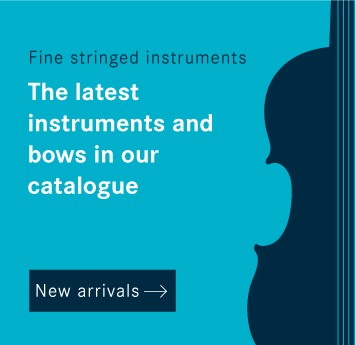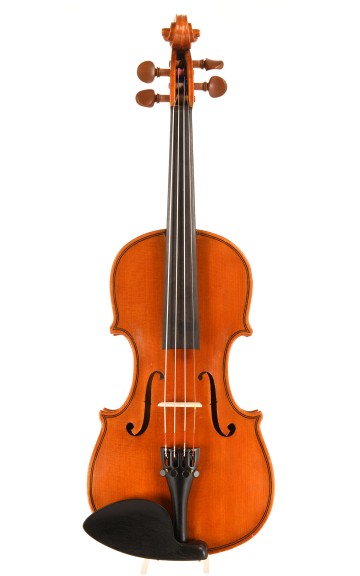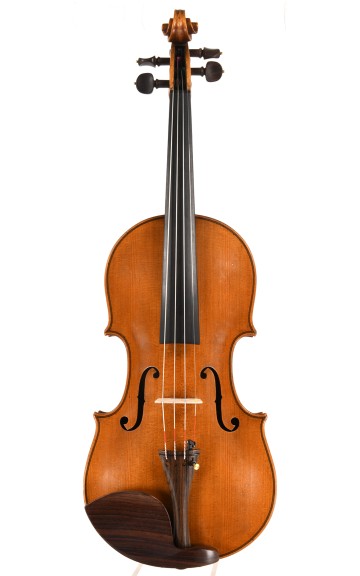A violin size chart and tips about selecting the dimensions for smaller violins and violas
What size should a student violin be so your child can play it easily? Answer gives our violin size chart and the following tips about selecting the right dimensions for smaller instruments.
The right violin size for children and adults
Finding the right violin size for students is always a customised process. What matters most is not the child's height or age, but the length of his or her arms. If you select one of our smaller sized violins, our guaranteed return policy will protect you against miscalculating the violin size you need. Of course, however, we hope that that the instrument you order will be the correct size and therefore can be played immediately. To help make sure this happens, we have given you a few tips about selecting the right student violin. Our violin size chart lets you estimate how a child's arm length and age usually relate to each other. To provide greater orientation, we have also added information about the child's height and the standard approximate parameters of instrument size.
| Arm length | Approx. age* | Approx height | Violin** | Viola** | Bow*** |
| 340-430 mm | 3-5 | 1,00-1,20 m | 1/16 (230 mm) | --- | < 430 mm |
| 420-445 mm | 4-7 | 1,10-1,30 m | 1/8 (255 mm) | 1/4 (250-280 mm) | 430-490 mm |
| 445-510 mm | 5-8 | 1,20-1,35 m | 1/4 (280 mm) | 1/2 (280-320 mm) | 490-550 mm |
| 500-570 mm | 6-9 | 1,20-1,45 m | 1/2 (320 mm) | 1/2 (280-320 mm) | 550-610 mm |
| 560-600 mm | 7-11 | 1,35-1,50 m | 3/4 (335 mm) | 3/4 (330-340 mm) | 610-670 mm |
| > 600 mm | adults | > 1,50 m | 4/4 (355 mm) | 4/4 (380/400 mm) | > 670 mm |
- * in years
- ** the length of the instrument body, which is also indicated in our catalogue
- *** only the length of the stick, not including the screw
You can measure arm length most easily by having children extend their left arm straight ahead; measure the span between the beginning of the shoulder and the middle of the open palm.
Whereas it is common practice to buy slightly larger clothes for children to "grow into," the exact reverse is true when it comes to purchasing a violin.  violin size that is too small is much less challenging to play than one that is too large. Once you have received the violin your child's teacher will certainly help you decide whether it is a high-quality violin and a good fit in the right size.
violin size that is too small is much less challenging to play than one that is too large. Once you have received the violin your child's teacher will certainly help you decide whether it is a high-quality violin and a good fit in the right size.
Another useful rule of thumb is that children should be able to cup the scroll in their hand when they fully extend their arm. Another test is to have the child play a few notes in first position – assuming the child has already learned that – to see if the mensur (a measure of the overall string length) fits well in the hand. Beyond that, it goes without saying that they should be able to keep their arm in position comfortably and without strain.
Related information and articles:
The violin wolf tone: Taming the wolf in a stringed instrument
The violin: practical tips on care and maintenance
Student violins: a few answers to frequently asked questions
How to select a violin, provenance, value and violin appraisal
The violin bow: practical tips on care and maintenance
Sell your violin to Corilon violins
Originally published by Corilon violins.






